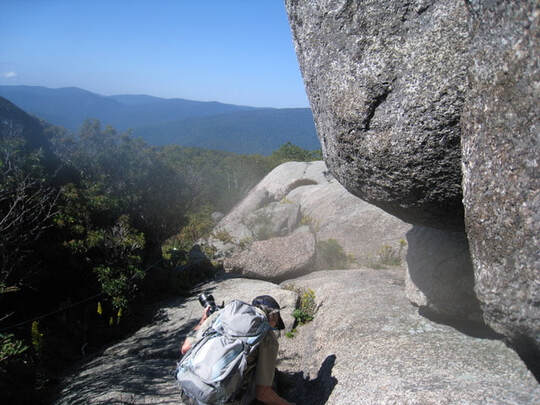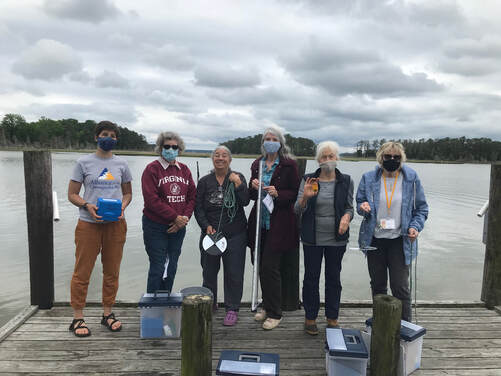Below, we present some of the 2021 data through a table of quantitative outputs and an impact statement that was submitted to Virginia Cooperative Extension and other sponsors. To learn about more stories of volunteers and their projects, check out our 2021 VMN Program Awards announcement.
|
|
2021
|
|
New Basic Training Graduates
|
333
|
|
Total VMN Membership
|
3,184
|
|
Volunteers Reporting Service Hours
|
2,136
|
|
Certified Virginia Master Naturalists
|
1,386
|
|
Continuing Education Hours
|
25,491
|
|
Service Hours: Education & Outreach
|
26,877 hours by 955 volunteers
|
|
Service Hours: Citizen Science
|
70,066 hours by 1,574 volunteers
|
|
Service Hours: Stewardship
|
48,282 hours by 1,294 volunteers
|
|
Service Hours: Chapter Administration
|
32,848 by 1,132 volunteers
|
|
Total Service Hours
|
178,073 hours by 2,136 volunteers
|
|
Monetary Value of Service
|
$5,189,047
|
|
Sites Improved Through Stewardship
|
580
|
|
New Habitat Sites Planted or Restored
|
42
|
|
Number of Citizen Science Studies
|
60+
|
|
Number of Direct Educational Contacts Made
|
162,149
|
Relevance
Americans’ interest in nature is growing. There is a large constituency of people, both urban and rural, engaged in non-consumptive uses of natural resources such as birdwatching, and studies show this population is growing. Due to the pandemic, parks and natural areas in Virginia experienced record visitation in the last two years, and people also sought new ways to connect with nature at home. Research also shows, however, that Americans still face a significant gap between their interest in nature and their ability and opportunities to pursue that interest. Individuals need opportunities to be actively involved in exploring, caring for, and observing nature in their local communities. Furthermore, because the most impactful experiences in nature are deeply social, opportunities to connect people with nature through social groups are needed.
At the same time, Virginia is facing difficult natural resource challenges, such as loss of forestland, sea level rise, and invasive species impacts. State and local natural resource agencies need help to accomplish their missions, address these natural resource challenges, and reach more sectors of our population. Public engagement is critical to successful conservation and management of Virginia’s woods, wildlife, and waters.
Response
The Virginia Master Naturalist (VMN) program addresses these needs by supporting a statewide corps of volunteers providing education, outreach, and service dedicated to the beneficial management of natural resources and natural areas within their communities. With 30 chapters across Virginia, the program aims to extend the capacities of both state and local natural resource agencies and organizations to be able achieve their missions in new ways, engage new audiences, and work towards creating a citizenry more informed about and involved in natural resource conservation and management. The program, because of its chapter-based structure, also promotes learning about, exploring, and stewarding natural areas through social groups.
Every year, hundreds of Virginians become new VMN volunteers through training and service. The process for becoming a Certified VMN typically takes 6 to 12 months. One starts by completing a 40-hour basic training course offered by one the local chapters of the program. An additional 8 hours of continuing education and 40 hours of volunteer service are also required to become certified or recertified, though this requirement was halved in 2021 in recognition of the limitations on service due to the pandemic. Volunteer service hours are recorded in four primary areas: education, stewardship, citizen science, and chapter administration. At the statewide level, the program is sponsored by seven state agencies, and on the local level, chapters partner with dozens of conservation and education organizations.
Results
The VMN program currently has approximately 2,100 volunteers who reported service in 2021. These volunteers completed more than 25,000 hours of training and continuing education in 2021. They also contributed significant volunteer time in the areas of education, citizen science, stewardship, and chapter administration, amounting to more than $5.2 million in contributions to natural resource conservation in Virginia (based on IndependentSector.org value of a volunteer hour.) Since the program’s inception in 2005, VMN volunteers have contributed more than 1.6 million hours of service with a value of $43 million to the Commonwealth of Virginia.
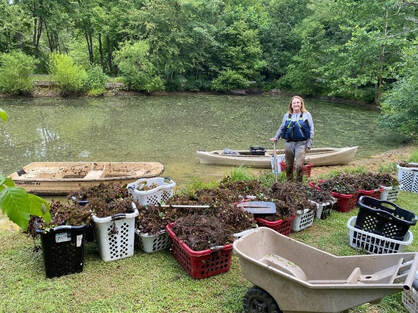 Using boats and also rakes from the shoreline, VMN volunteers in Fairfax and Prince William counties laboriously removed patches of invasive water chestnut, Trapa bispinosa, from ponds in the area, where it threatens native aquatic life. Photo by Ron Grimes.
Using boats and also rakes from the shoreline, VMN volunteers in Fairfax and Prince William counties laboriously removed patches of invasive water chestnut, Trapa bispinosa, from ponds in the area, where it threatens native aquatic life. Photo by Ron Grimes.
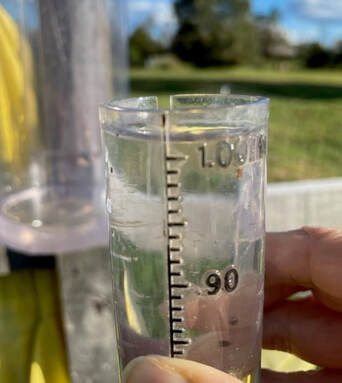 VMN volunteers in 100 different locations collected precipitation data that are used by scientists, governments, farmers, and others. Photo by Mary Ames.
VMN volunteers in 100 different locations collected precipitation data that are used by scientists, governments, farmers, and others. Photo by Mary Ames.
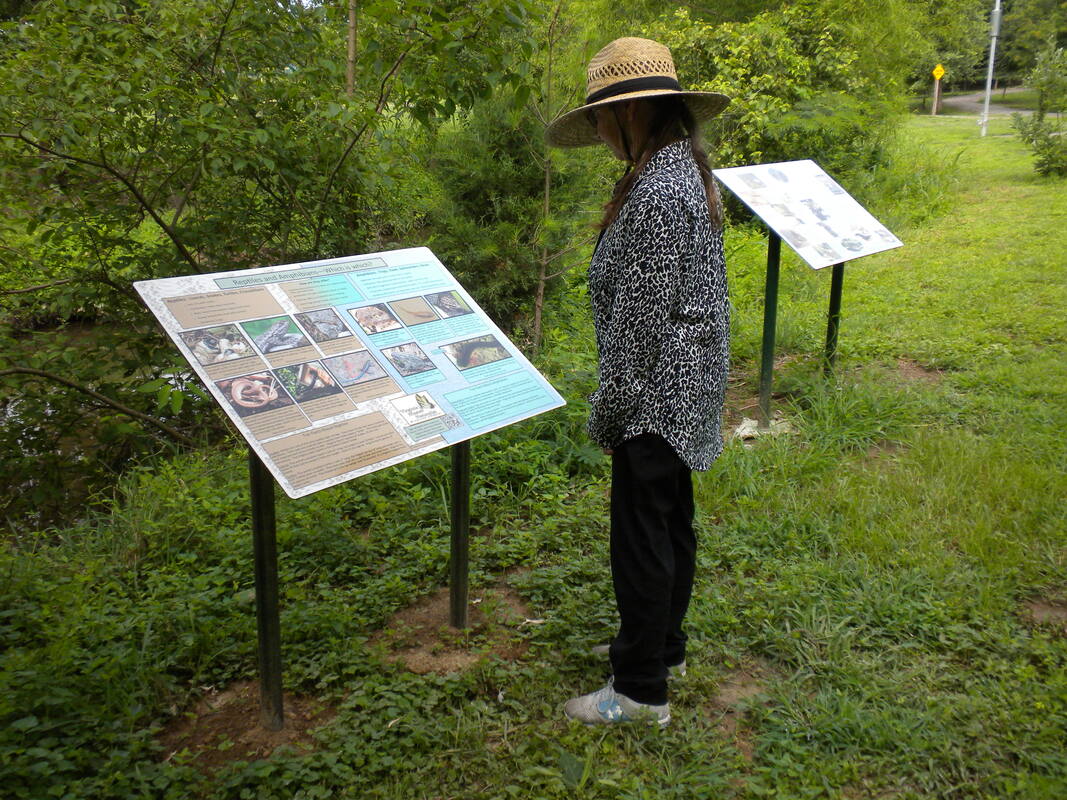 Interpretive signage created by VMN volunteers in Bellemeade Park in Richmond. Photo by Diane Moxley.
Interpretive signage created by VMN volunteers in Bellemeade Park in Richmond. Photo by Diane Moxley.

